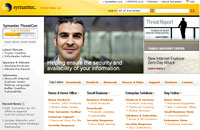 Hackers racked up attacks on home PC users and financial services companies in the first half of this year, according to the latest Symantec Internet Security Threat Report Trends.
Hackers racked up attacks on home PC users and financial services companies in the first half of this year, according to the latest Symantec Internet Security Threat Report Trends.
The report tracked Internet threat trends from January to June this year and discovered a new high in the volume of emerging vulnerabilities.
Employing a network of 40,000 sensors spread across 180 countries, Symantec identified 2,249 new vulnerabilities, with the majority of the new threats (69 per cent) being in Web applications.
Vulnerability researchers (now, there’s a job title!) found 47 flaws in the Mozilla Firefox and Mozilla browsers, a hefty increase of 17 flaws from the previous six months.
As expected, Microsoft led the pack with new threats, recording a total of 38 new threats affecting Microsoft’s Internet Explorer, up from 25 in the earlier period, with even Apple’s Safari browser notching up six more flaws to hit a total of 12 flaws.
Opera was the sole browser to see a drop in recorded vulnerabilities over the six months, dropping from nine to seven during the period.
No safe browser
“There is no safe browser,” senior director with Symantec Security Response, Vincent Weafer, finger-wagged. “If you’ve got a browser, make sure you’re configuring it correctly,” he added.
Although more bugs were found lurking in Mozilla than in IE, Symantec commended the open-source project for its prompt bug-fixing, with bugs usually being patched within one day of their public disclosure – the snappiest response of all measured browsers.
Opera came in second with an average two days to fix bugs, with Apple’s Safari recording a rather tardy five-days.
 The notoriously leisurely Microsoft averaged nine days per patch, but that snail-like response was still faster than Sun Microsystems.
The notoriously leisurely Microsoft averaged nine days per patch, but that snail-like response was still faster than Sun Microsystems.
The report found that home users were targeted most (86 per cent), with the US being the numero uno source of online attacks (37 percent), thanks to its large number of compromised machines with broadband connections,
“What really surprises is the way that attackers are moving,” says Dean Turner, editor of the bi-annual threat report.
“They’re now starting to target home users quite heavily primarily because home users are the weakest link in the security chain,” says Turner.
Phishing, spamming and badboy bots
Phishing continues to grow in popularity, with Symantec identifying a total of 157,477 distinct phishing messages over the six month period, while spam accounted for 54 per cent of all monitored email traffic, up 50 per cent.
Symantec also detected more than 4.6 million active bot network computers, registering an average of 57,717 active bot network computers per day.
Bot networks are commonly used in denial-of-service (DoS) attacks and their stats revealed an average of 6,110 DoS attacks per day.
The report concluded that polymorphic viruses are likely to grow, with Web 2.0 technologies and Instant Messaging affording new opportunities for pesky hackers to wreak havoc.
The real battleground, however, should come with the release of Microsoft’s Windows Vista operating system, which will see hackers doing their damndest to circumvent its new security features.
 The mobile TV audience soared 45 percent to 3.7 million subscribers in Q2 2006, according to a new report by telecom and new media researchers, Telephia.
The mobile TV audience soared 45 percent to 3.7 million subscribers in Q2 2006, according to a new report by telecom and new media researchers, Telephia. “News and information is the killer app for mobile television. With just a quick flip of their phone it gives consumers instant gratification,” added Gaffney.
“News and information is the killer app for mobile television. With just a quick flip of their phone it gives consumers instant gratification,” added Gaffney. One thing the Web is great for is reaching out to a potential audience of millions to garner support for your cause.
One thing the Web is great for is reaching out to a potential audience of millions to garner support for your cause.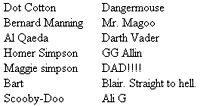 To further promote Tony’s cause the author has invited surfers to sign a petition to register their support, with a form inviting people to enter their name, email address and short comment.
To further promote Tony’s cause the author has invited surfers to sign a petition to register their support, with a form inviting people to enter their name, email address and short comment. Before long, posters had worked out how to add pretty colours to their signatures and then moved on to embedding images.
Before long, posters had worked out how to add pretty colours to their signatures and then moved on to embedding images.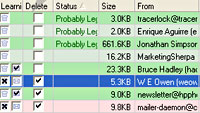 A new report from anti virus firm SoftScan has revealed that spam levels remain hideously high at 87.72% of all email traffic, while reports of phishing activity have soared.
A new report from anti virus firm SoftScan has revealed that spam levels remain hideously high at 87.72% of all email traffic, while reports of phishing activity have soared.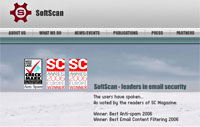 Spam levels are expected to reduce by a few per cent soon, with the post-summer holiday rise in legitimate business email pushing the spam percentage back down to its usual level of around 85 per cent.
Spam levels are expected to reduce by a few per cent soon, with the post-summer holiday rise in legitimate business email pushing the spam percentage back down to its usual level of around 85 per cent. How fantastic is this? A couple of turbo-code monkeys have written a Commodore 64 (C64) emulator that runs within Flash on a Web browser.
How fantastic is this? A couple of turbo-code monkeys have written a Commodore 64 (C64) emulator that runs within Flash on a Web browser. MAME was a huge revelation when it first arrived, letting users load up the ROM sets from old arcade machine and play them as if it was on the original hardware.
MAME was a huge revelation when it first arrived, letting users load up the ROM sets from old arcade machine and play them as if it was on the original hardware. All of the emulators are a clear demonstration that the power of hardware has increased tremendously.
All of the emulators are a clear demonstration that the power of hardware has increased tremendously.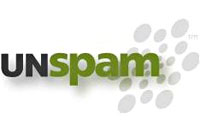 Unspam Technologies has announced the launch of a new website – lostinthecrowd.org – that sneakily helps keep Web searches private.
Unspam Technologies has announced the launch of a new website – lostinthecrowd.org – that sneakily helps keep Web searches private.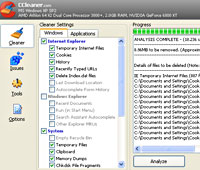 Of course, routinely clearing the cookies from your browser is the safest option, but Lost in the Crowd takes a different approach by automatically placing random queries through the search engines you use from your tracking cookie.
Of course, routinely clearing the cookies from your browser is the safest option, but Lost in the Crowd takes a different approach by automatically placing random queries through the search engines you use from your tracking cookie.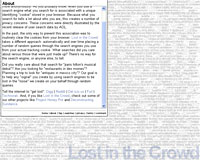 Langheinrich said that Unspam has no intention of making any money out of the service, citing that the site’s sole purpose was to focus people to the issue of online privacy.
Langheinrich said that Unspam has no intention of making any money out of the service, citing that the site’s sole purpose was to focus people to the issue of online privacy.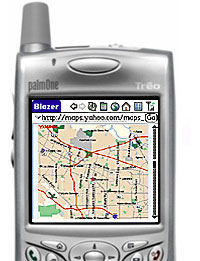 With more Internet-enabled handsets on the market, it’s not surprising that more punters are getting a bit of Web action on the move, with email and weather sites being the top two most visited mobile sites.
With more Internet-enabled handsets on the market, it’s not surprising that more punters are getting a bit of Web action on the move, with email and weather sites being the top two most visited mobile sites.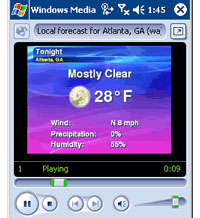 Top US Mobile Websites (June 2006)
Top US Mobile Websites (June 2006) We’ve been keeping our eyes on
We’ve been keeping our eyes on 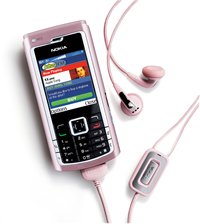 O2 have announced the usage charges of Visual Radio. At O2’s standard data rates of £3.00 per Mb dependent on tariff or O2 Browse and Download bolt-ons from £3 for 2mb and £5 for 4mb.
O2 have announced the usage charges of Visual Radio. At O2’s standard data rates of £3.00 per Mb dependent on tariff or O2 Browse and Download bolt-ons from £3 for 2mb and £5 for 4mb.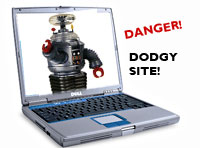 Search engine giants Google have introduced a new feature which alerts punters about search results that could potentially lead them to dodgy sites with malicious code.
Search engine giants Google have introduced a new feature which alerts punters about search results that could potentially lead them to dodgy sites with malicious code. With search engine results routinely displaying links to sites stuffed full of spyware and adware, it is reckoned that US surfers arrive at on malicious sites about 285 million times per month – all from clicking on search results from the five major search engines.
With search engine results routinely displaying links to sites stuffed full of spyware and adware, it is reckoned that US surfers arrive at on malicious sites about 285 million times per month – all from clicking on search results from the five major search engines. UK banks may be gleefully reporting big fat profits every quarter, but new research from eService provider Transversal claims that online customer service from Britain’s banks has sunk to an all time low.
UK banks may be gleefully reporting big fat profits every quarter, but new research from eService provider Transversal claims that online customer service from Britain’s banks has sunk to an all time low.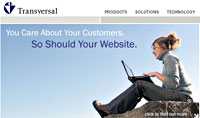 Of the forty per cent that bothered to provide an email address, there was clearly no rush to answer their customers’ questions, with the banks taking a leisurely average of 22 hours to respond.
Of the forty per cent that bothered to provide an email address, there was clearly no rush to answer their customers’ questions, with the banks taking a leisurely average of 22 hours to respond.